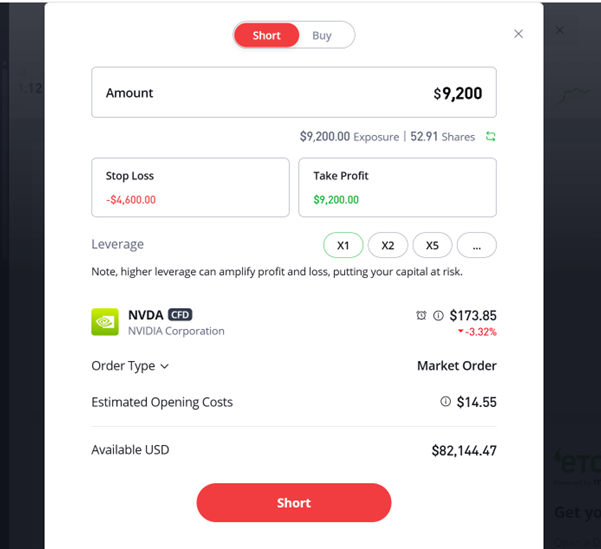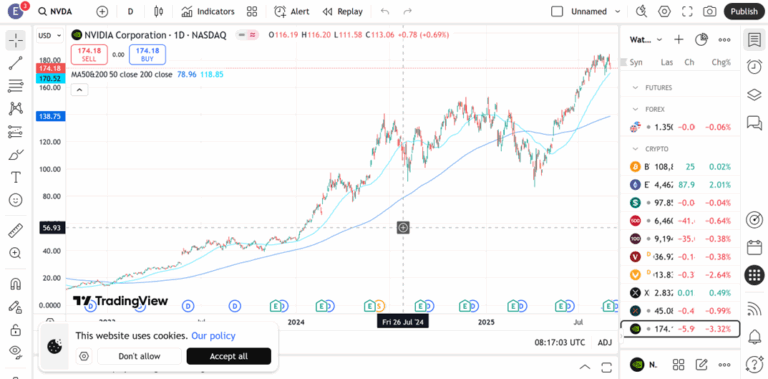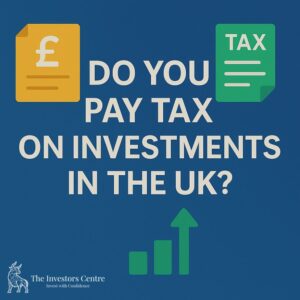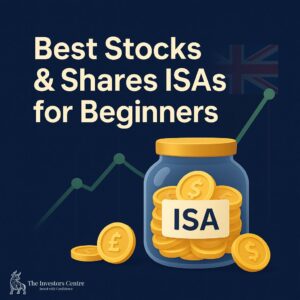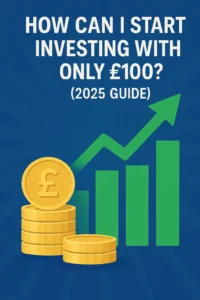How to Short on eToro – Step-by-Step Beginners Guide
Profile

Co-Founder
Thomas brings extensive experience in financial analysis and investment research. With a strong background in both institutional and retail investment sectors, Thomas ensures all content meets the highest standards of accuracy and relevance.
Follow on Twitter"Every piece of investment advice should be grounded in solid research and practical application. My role is to ensure our content provides real value to investors at every level."
My Favourite Writes:
Profile

Co-Founder
Dom is an experienced retail investor, learning his craft in what he likes to call the "hard way". Through many of these lessons he has crafted himself a sound investment strategy that has enabled him to make investing into a business not just a hobby.
Follow on Twitter"Financial clarity and integrity are the cornerstones of everything we do. We're here to ensure that your investment journey is built on a solid financial understanding and a sound strategic foundation."
My Favourite Writes:
Profile
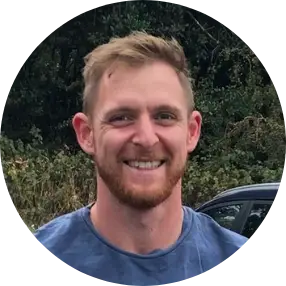
Co-Founder
Adam is a passionate investor who created The Investors Centre (TIC) to combine his professional skills with his love for investment.
Follow on Twitter"Investment is about more than just numbers; it's about strategy, research, and the willingness to adapt."
My Favourite Writes:
How We Test
Our Commitment to Accuracy
At The Investors Centre, we maintain the highest standards of accuracy and reliability in all our investment education content. Every article undergoes rigorous fact-checking and review processes.
Our Testing & Verification Process
- Primary Research: We gather data directly from official sources including company reports, regulatory filings, and government databases.
- Platform Testing: Our team personally tests and evaluates investment platforms, creating accounts and documenting real user experiences.
- Expert Analysis: Content is reviewed by experienced investors and financial professionals within our team.
- Data Verification: All statistics, figures, and claims are cross-referenced with multiple authoritative sources.
- Regular Updates: We review and update content quarterly to ensure information remains current and accurate.
Review Standards
- Independence: We maintain editorial independence and disclose any potential conflicts of interest.
- Transparency: Our testing methodology and evaluation criteria are clearly documented.
- Objectivity: Reviews are based on measurable criteria and standardized testing procedures.
Corrections Policy
If errors are identified, we correct them promptly and note significant updates at the bottom of articles. Readers can report inaccuracies to our editorial team at info@theinvestorscentre.co.uk
Last Review Date
This article was last fact-checked and updated on: August 31, 2025
Disclaimer
Educational Purpose Only
All content on The Investors Centre is provided for educational and informational purposes only. It should not be construed as personalised investment advice, financial advice, or a recommendation to buy, sell, or hold any investment or security.
No Financial Advice
We are not authorised by the Financial Conduct Authority (FCA) to provide investment advice. Content on this website does not constitute financial advice, and you should not rely on it as such. Always consult with a qualified financial advisor or professional before making investment decisions.
Investment Risks
Investing carries inherent risks, including the potential loss of principal. Past performance does not guarantee future results. The value of investments can go down as well as up, and you may not get back the amount originally invested.
Accuracy & Completeness
While we strive to provide accurate and up-to-date information, we make no representations or warranties of any kind, express or implied, about the completeness, accuracy, reliability, suitability, or availability of the information contained on this website.
Third-Party Content & Links
This website may contain links to third-party websites and references to third-party products or services. We do not endorse, control, or assume responsibility for any third-party content, privacy policies, or practices. Users access third-party sites at their own risk.
Affiliate Disclosure
Some links on this site may be affiliate links. If you click on these links and make a purchase or sign up for a service, we may receive a commission at no additional cost to you. This does not influence our editorial content or reviews.
Personal Responsibility
Any action you take upon the information on this website is strictly at your own risk. We will not be liable for any losses or damages in connection with the use of our website or the information provided.
Regulatory Notice
Investment products and services featured on this website may not be available in all jurisdictions or to all persons. Users are responsible for complying with local laws and regulations.
Contact Information
For questions about this disclaimer or our content, please contact:
Email: info@theinvestorscentre.co.uk
Last Updated
This disclaimer was last updated on: August 2025
Best for Beginners
eToro
eToro is a leading social trading platform that offers excellent range of assets including stocks, crypto, ETFs and more with copy trading features.
61% of retail CFD accounts lose money when trading CFD’s with this provider.
Quick Answer: These are the steps to shorting on eToro:
Yes, you can short assets on eToro using CFDs. The process is straightforward:
Open and verify your eToro account
Deposit funds in GBP or USD
Search for your chosen asset
Click “Sell” instead of “Buy”
Confirm trade details and place order
Introduction
Shorting allows traders to profit when prices fall. eToro enables this through Contracts for Difference (CFDs), covering stocks, forex, crypto, commodities, and indices. eToro is amongst the best CFD platforms available to UK traders.
It is available to UK retail traders but involves greater risks, overnight fees, and leverage exposure compared to traditional long investing strategies.
How to Short on eToro – Step-by-Step
Step 1 – Open and verify your eToro account
Register online, provide personal details, and complete KYC verification. You’ll need photo ID and proof of address. Verification ensures regulatory compliance and account security. Once approved, you can access the trading dashboard to explore available markets and prepare to place your first short trade.
Step 2 – Deposit funds into your account
Fund your account in GBP, USD, or other supported currencies. Bank transfers, debit cards, and e-wallets are common methods. Remember, all shorts are executed in CFDs, so currency conversion may apply. Check fees for deposits and withdrawals before committing significant capital.
Step 3 – Search for the asset you want to short
Use the platform’s search function to locate the stock, currency pair, crypto, or commodity. For example, type “Tesla” or “BTC/USD” to find markets. Always double-check you are selecting the correct asset before opening a trade, as similar tickers can exist.
Step 4 – Select “Sell” instead of “Buy”
Click the “Sell” option to open a short position. This indicates you expect the asset’s price to fall. The platform calculates exposure automatically, displaying the margin required, leverage applied, and estimated overnight costs before you confirm the trade.
Step 5 – Choose your stake, leverage, and stop-loss
Enter your investment amount and decide if leverage should be applied. Always set stop-loss and take-profit levels to manage risk effectively. Short positions can move against you quickly, so predefined exit points help protect your account from significant unexpected losses.
Step 6 – Place your short order and monitor the trade
Confirm your order to open the short. Monitor performance in your portfolio dashboard, tracking unrealised profit and loss. Adjust stop-losses or close the trade manually when conditions change. Review daily overnight fees, as these can impact profitability for longer-term positions.
Can You Short on eToro?
Yes. You can short on eToro by opening a “Sell” position using CFDs. This allows traders to profit from falling prices across stocks, forex, crypto, and commodities. Shorting is accessible to UK users but carries higher risks, overnight fees, and leverage considerations than standard investing.
Which assets can you short on eToro?
You can short most major asset classes: stocks, crypto, forex, indices, and commodities. Availability varies depending on regulations and market conditions. For instance, high-volatility assets may be restricted temporarily, so always check the platform before placing a short order on your chosen market.
How does shorting work on eToro compared to traditional short selling?
Unlike borrowing shares, eToro uses CFDs, where you speculate directly on price movements. This makes shorting accessible without ownership complexities. However, it also means exposure to spread costs, overnight financing charges, and leverage risks that aren’t present in traditional short-selling arrangements.
Are there restrictions on shorting with eToro?
Yes. Regulatory rules and market volatility can restrict shorting certain assets. For example, some jurisdictions impose bans during extreme conditions. eToro may also limit leverage or availability temporarily. Always confirm trade availability in your account before relying on shorting strategies in volatile markets.
Do you need leverage to short on eToro?
No. Short trades can be opened without leverage by selecting 1x exposure. This reduces risk while still profiting from falling prices. Higher leverage is optional but increases both potential gains and losses, alongside daily financing charges. Beginners should avoid excessive leverage when shorting.
Not Sure Which Platform to Choose?
Answer 5 quick questions and we’ll provide a personalised recommendation for the best options tailored to your specific needs and experience level.
Costs and Fees for Shorting on eToro
What fees apply to short trades?
Shorting on eToro involves spreads, overnight financing, and potential withdrawal charges. While opening positions may appear commission-free, spreads create costs at entry and exit. Financing fees apply for each day a CFD short remains open, making frequent trading or shorter holding periods more cost-efficient.
Does eToro charge overnight fees on shorts?
Yes. Overnight financing applies to all leveraged CFD positions, including shorts. Charges vary by asset type and leverage applied. Crypto and stock CFDs often carry higher fees than forex pairs. Review the platform’s fee table to understand daily costs before holding short positions overnight.
How does leverage affect costs?
Leverage magnifies both profits and losses, but it also increases daily financing fees. A short at 5x leverage will cost more in overnight charges than one at 1x. Using minimal leverage reduces costs but also limits profit potential. Balance affordability with risk tolerance carefully.
Risks of Shorting on eToro
Why is shorting riskier than buying?
When buying, losses are limited to your investment. With shorting, losses can exceed deposits if prices rise dramatically. This asymmetry makes shorts inherently riskier. Traders must use stop-losses and avoid excessive leverage to prevent rapid account depletion during unexpected market rallies.
What happens if the price rises instead of falls?
If the price increases, your short loses value. Losses grow as the asset rises, and positions may be liquidated if margin requirements aren’t met. Protecting against upside risk is critical—stop-losses and careful trade sizing are essential when shorting volatile or trending markets.
Can you lose more than you deposit when shorting?
Yes, especially with leveraged trades. While some trading platforms offer negative balance protection, large, sudden market moves can trigger outsized losses. Always confirm protections within your account. Managing position size and using risk controls is the best way to avoid losses beyond your capital.
Alternatives to Shorting on eToro
Can you hedge without shorting?
Yes. Investors can reduce risk by diversifying into safer assets like bonds or defensive stocks instead of shorting. Hedging with uncorrelated assets reduces downside without the risks associated with CFDs, overnight fees, or leveraged short positions on volatile instruments.
Are inverse ETFs available on eToro?
Inverse ETFs rise in value when underlying indices fall, offering a way to profit without directly shorting. Some ETFs are available on the platform, though coverage varies by region. They provide simpler downside exposure with lower risk compared to leveraged short CFD trades.
Is reducing exposure safer than short selling?
Yes. Instead of shorting, traders can reduce portfolio exposure by selling part of their positions. This avoids the risks of leverage, overnight financing, and sharp losses if markets move higher. For many beginners, reducing exposure is safer than entering a CFD short.
Final Thoughts
Yes, you can short on eToro using CFDs by selecting “Sell” instead of “Buy.” This gives traders exposure to falling prices across multiple assets. However, shorting is riskier than long investing, with overnight fees and leverage considerations. Beginners should practice cautiously, ideally using demo accounts before committing real funds.
Top 5 Platforms
1

eToro
61% of retail CFD accounts lose money when trading CFD’s with this provider.
2

Interactive Investor
Trading and investing involve risk. Capital at Risk
3

IG
69% of retail investor accounts lose money when trading spread bets and CFDs with this provider.
4

Hargreaves Lansdown
64% of retail investor accounts lose money when trading CFDs with this provider.
5

Interactive Brokers
When investing, your capital is at risk
Still Not Sure Which Platform?
FAQs
Can beginners short on eToro?
Yes, beginners can short, but caution is vital. Shorting carries higher risk than buying and involves overnight fees. New traders should practice with a demo account before shorting live markets. Education and risk management are essential before attempting advanced strategies like short selling.
Is shorting on eToro the same as using CFDs?
Yes. All shorts on eToro are executed through CFDs, meaning you speculate on price moves without owning the asset. This makes access easier but introduces spreads, financing charges, and leverage risks that differ significantly from traditional shorting methods in stock markets.
What is the minimum amount to short on eToro?
The minimum trade size depends on the asset. For stocks, it is typically around $10–$50, while forex pairs may start even lower. Fractional exposure makes shorting accessible to small accounts, though higher amounts may be required for meaningful position sizing.
Is there a demo mode for practicing shorts on eToro?
Yes. eToro provides a demo account with virtual funds, allowing traders to practice shorting without risk. This is a useful way to learn platform functions, understand overnight fees, and test risk management strategies before trading real money in live markets.
Does eToro allow shorting stocks, crypto, and forex?
Yes. You can short major stocks, cryptocurrencies, forex pairs, commodities, and indices. Access depends on your region and regulatory restrictions. Some high-volatility assets may be temporarily restricted, so always check availability in your trading dashboard before attempting a short position.
References
- https://help.etoro.com/s/article/How-do-I-open-a-short-position?language=en_GB
- https://www.etoro.com/trading/short-selling/
- https://www.fca.org.uk/markets/short-selling/notification-disclosure-net-short-positions





